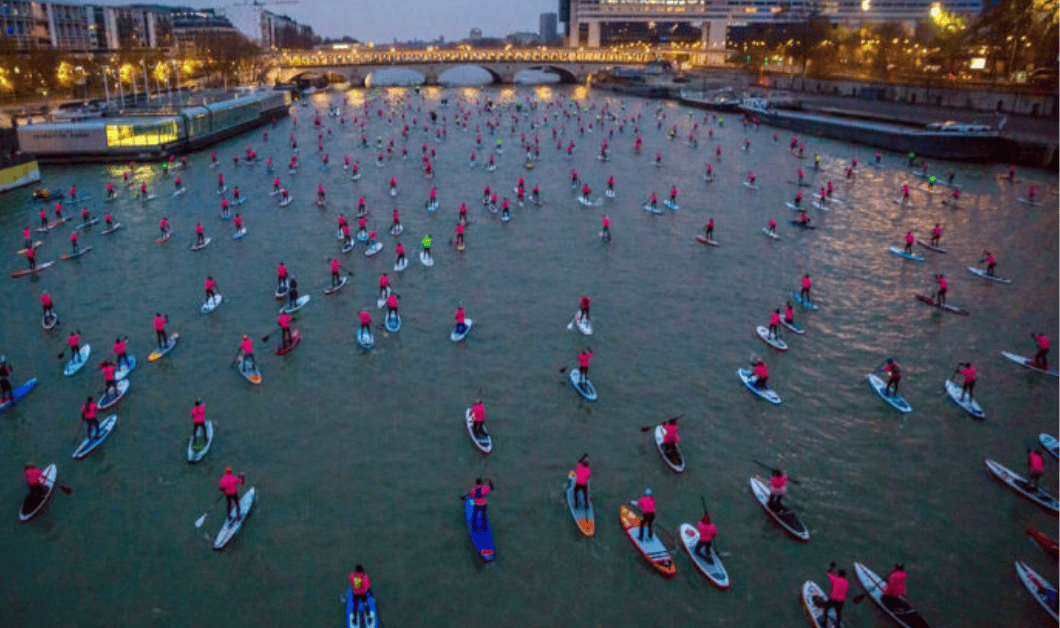Seine River Clean-Up efforts have transformed one of Paris’s most iconic yet long-polluted waterways into a safe and vibrant urban swimming destination. For the first time since 1923, the River Seine has been declared safe for public swimming. This environmental milestone comes on the heels of an ambitious billion-dollar clean-up initiative, catalyzed by the 2024 Paris Olympics. The transformation of the Seine not only enhances public health and recreation but also showcases global best practices in sustainable urban water management.
Historical Pollution of the Seine River Clean-Up
The Seine River’s decline began over a century ago. For decades, it bore the brunt of urban and industrial waste. Paris’s antiquated sewage system was a major culprit—designed to carry both stormwater and wastewater through the same pipes. During periods of heavy rainfall, these pipes would overflow, releasing untreated sewage directly into the river. This overflow caused dangerous spikes in E. coli levels, rendering the water hazardous to human health and aquatic life.
The consequences were severe. The high presence of bacteria and toxins in the river led to a ban on swimming in 1923. Additionally, the Seine became largely inhospitable to fish and other organisms. The river’s condition was a reflection of broader urban infrastructure failures, and its pollution remained a long-standing embarrassment for a city that prides itself on beauty and culture.
Causes of Water Contamination
The primary source of contamination was the city’s combined sewer system. Unlike modern systems that separate stormwater from sewage, Paris’s system could not cope with increased water volumes during storms. These overflow events bypassed wastewater treatment plants entirely, dumping harmful waste straight into the river.
Moreover, a significant number of homes—especially older buildings—were not properly connected to the central sewer network. This led to unregulated discharges into the Seine. These factors combined to make the river unsuitable for recreational or ecological use for nearly a century.
Major Seine River Clean-Up and Infrastructure Upgrade
The Seine River Clean-Up was initiated as part of Paris’s preparations for hosting the 2024 Summer Olympics. The French government, along with local authorities, invested over one billion dollars into revamping the city’s water infrastructure.
A pivotal component of the effort was the construction of a massive underground stormwater storage tank in southeastern Paris. This tank—one of the largest in Europe—can hold millions of litres of stormwater, preventing overflow during heavy rains. Alongside this, wastewater treatment plants were modernised to handle larger capacities, and more than 30,000 homes were finally connected to proper sewer lines.
These systemic upgrades have significantly curtailed the direct discharge of untreated sewage into the river, improving both water quality and ecological health.
Seine as an Olympic Venue and Public Swimming Site
During the 2024 Olympics, the Seine was used for several aquatic events, including the triathlon and open-water swimming. Despite occasional rain-related interruptions, water quality was closely monitored, and swimming events proceeded under strict safety protocols.
Post-Olympics, the Seine was opened to the public with three designated swimming zones along the riverbanks. These areas can accommodate over 1,000 swimmers daily during the summer months. Real-time water quality monitoring ensures that E. coli levels remain within safe limits, reinforcing public confidence.
The return of swimming to the Seine is not just about recreation; it symbolizes the successful resurrection of a vital natural and cultural asset.
Environmental and Urban Significance of the Seine River Clean-Up
The Seine River Clean-Up serves as a global model for urban water restoration. It highlights how large-scale investment, scientific planning, and political commitment can rehabilitate even the most polluted water bodies. The project balances environmental recovery with public health and urban livability.
Moreover, it has reignited interest in urban rivers as public spaces—not just for transport or scenery, but as hubs of community engagement, exercise, and biodiversity. Cities like London, New York, and Delhi, which face similar pollution challenges, are now studying Paris’s model as a blueprint for change.
Conclusion
The transformation of the Seine River is more than just a local victory; it’s an international symbol of what’s possible when urban planning, environmental science, and civic pride come together. With continued efforts and public participation, the Seine may remain a clean, swimmable river for generations to come—setting a precedent for waterway revitalization in cities around the world.




